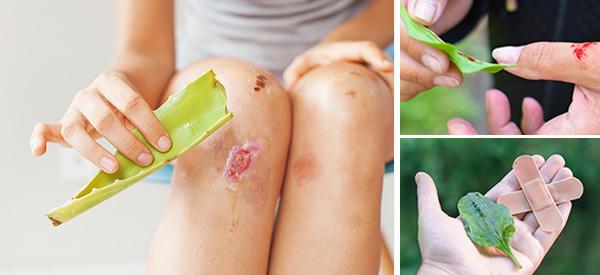
Natural Home Wound Care: Do’s & Don’ts
Warmer days have arrived. For most of us, that means more time spent outdoors. However, hiking, strolling through the park, and going to the playground with the kids all present opportunities for scrapes and bruises.
While serious injuries should always be seen by a healthcare professional, minor wounds can be treated by natural remedies found in your kitchen or garden. After gently washing the skin with water to clear away dirt and residual bacteria, you can apply one of the soothing natural treatments highlighted in this article.
Raw Honey
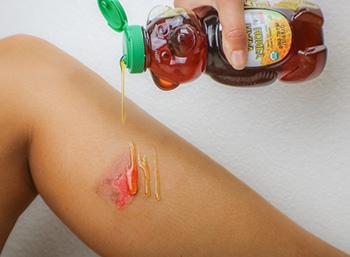 The use of raw honey as a healing ointment dates back several millennia. Because it contains the enzyme glucose oxidase, it can produce hydrogen peroxide under the right conditions. However, when hydrogen peroxide is exposed to air or light, its effectiveness tends to wane fairly quickly. By producing it directly inside a bandaged wound, raw honey solves this problem, allowing healing to take place.
The use of raw honey as a healing ointment dates back several millennia. Because it contains the enzyme glucose oxidase, it can produce hydrogen peroxide under the right conditions. However, when hydrogen peroxide is exposed to air or light, its effectiveness tends to wane fairly quickly. By producing it directly inside a bandaged wound, raw honey solves this problem, allowing healing to take place.
This study found that applying raw honey improves wound healing in acute cases, relieves burn pain, and reduces inflammation, although it had little to no effect on chronic leg ulcers. Overall, studies have supported the use of honey in medicine.
Yarrow
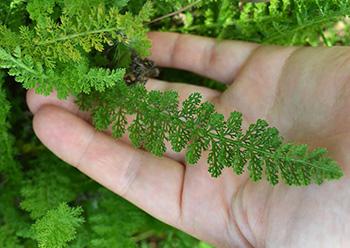 Yarrow (Achillea millefolium) contains many chemicals that may affect blood pressure and may have anti-inflammatory properties. If you live in an area where yarrow is abundant, pick some leaves and blooms and rub them together to create a mixture you can apply directly to the wound. It has been used for years to control bleeding, reduce inflammation, and heal broken skin, and some people chew on the leaves to relieve toothache pain. Dr. Nicole uses Yarrow in her First Aid Salve. Check it out here: ->
Yarrow (Achillea millefolium) contains many chemicals that may affect blood pressure and may have anti-inflammatory properties. If you live in an area where yarrow is abundant, pick some leaves and blooms and rub them together to create a mixture you can apply directly to the wound. It has been used for years to control bleeding, reduce inflammation, and heal broken skin, and some people chew on the leaves to relieve toothache pain. Dr. Nicole uses Yarrow in her First Aid Salve. Check it out here: ->
Chamomile
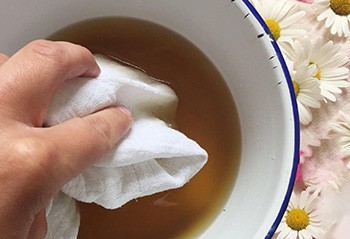 Although more commonly consumed as a tea, chamomile (Matricaria chamomilla) can speed wound healing when applied topically. Researchers have found that chamomile can kill viruses and bacteria, including Staphylococcus aureus. It can also reduce inflammation and treat ulcers. It has even been found that chamomile can complete wound healing faster than corticosteroids.
Although more commonly consumed as a tea, chamomile (Matricaria chamomilla) can speed wound healing when applied topically. Researchers have found that chamomile can kill viruses and bacteria, including Staphylococcus aureus. It can also reduce inflammation and treat ulcers. It has even been found that chamomile can complete wound healing faster than corticosteroids.
To use, moisten a chamomile tea bag, apply it to your scrape or cut, and let the soothing natural plant oils heal the damaged tissue. If the injury is painful, you can moisten the tea bag with cold water to gently numb the area and provide relief.
Aloe Vera
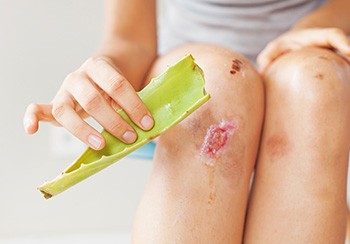
Aloe vera (Aloe vera) is a common component in commercial wound treatment products. If you have an aloe plant in your home, you can clip off a piece, squeeze out the gel, and apply it to sunburns, scrapes, and minor cuts.
Aloe vera gel not only increases collagen in wounds but alters their composition, increases collagen cross-linking, and thus promotes wound healing. Since the gel consists of 99% water, scientific studies have shown that it can increase skin flexibility and reduce fragility.
Turmeric
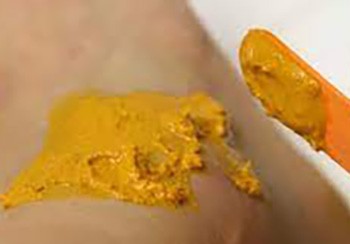 Turmeric (Curcuma longa) is a popular kitchen spice that has been used for centuries as a natural antiseptic and antibiotic. Because it contains curcumin, it helps wounds heal by reducing oxidation and inflammation and limiting the intensity of your body’s response, allowing the wound to heal more quickly. Researchers have found that the curcumin in turmeric can have a positive effect on collagen and tissue as well.
Turmeric (Curcuma longa) is a popular kitchen spice that has been used for centuries as a natural antiseptic and antibiotic. Because it contains curcumin, it helps wounds heal by reducing oxidation and inflammation and limiting the intensity of your body’s response, allowing the wound to heal more quickly. Researchers have found that the curcumin in turmeric can have a positive effect on collagen and tissue as well.
To use, mix one or two teaspoons (depending on the size of the wound) of turmeric with enough water to make a paste, apply it to the skin, and cover with a clean bandage. Leave for 12 to 24 hours. Repeat treatment for up to three days.
Cayenne Pepper
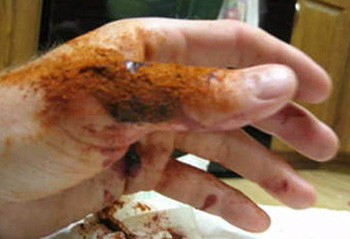 During World War II, the U.S. Army provided its soldiers with powdered Vitamin K to treat bullet wounds. Cayenne pepper contains Vitamin K, which helps the blood to clot. Experts suggest that Vitamin K helps control blood flow from wounds by spreading blood pressure from the wound site. Following equalization of the blood pressure around the wound, the rate of blood clotting drastically increases, thereby reducing the bleeding.
During World War II, the U.S. Army provided its soldiers with powdered Vitamin K to treat bullet wounds. Cayenne pepper contains Vitamin K, which helps the blood to clot. Experts suggest that Vitamin K helps control blood flow from wounds by spreading blood pressure from the wound site. Following equalization of the blood pressure around the wound, the rate of blood clotting drastically increases, thereby reducing the bleeding.
If you cut yourself in the kitchen, cover the wound with kitchen-quality cayenne pepper. It will sting but can stop any bleeding quickly enough for you to determine whether further medical care will be needed.
Garlic
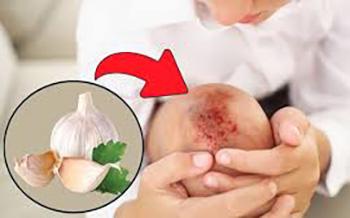 Garlic (Allium sativum) has been used by many cultures to heal wounds. Its active compound, allicin, has been shown to be antimicrobial and anti-inflammatory. Studies have shown that garlic and its extracts can stop bleeding, reduce pain, and reduce the risk of infection, thereby promoting healing.
Garlic (Allium sativum) has been used by many cultures to heal wounds. Its active compound, allicin, has been shown to be antimicrobial and anti-inflammatory. Studies have shown that garlic and its extracts can stop bleeding, reduce pain, and reduce the risk of infection, thereby promoting healing.
This study found that patients who had surgical wounds treated with garlic experienced significantly better healing. If you have a bleeding wound, apply crushed or minced garlic cloves to the site and cover with a sterile gauze dressing. Reapply the garlic remedy once or twice daily and change the covering.
Coconut Oil
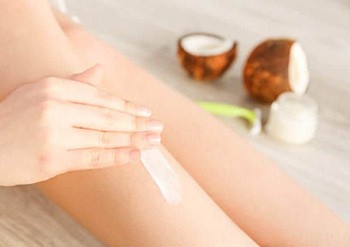 Although mainly known for its moisturizing properties, coconut oil is also antibacterial and anti-inflammatory, so it has often been used in wound care to ease pain and prevent infection and scarring. Apply it to the affected area and cover it with a clean bandage. Reapply two or three times a day, until the wound condition improves.
Although mainly known for its moisturizing properties, coconut oil is also antibacterial and anti-inflammatory, so it has often been used in wound care to ease pain and prevent infection and scarring. Apply it to the affected area and cover it with a clean bandage. Reapply two or three times a day, until the wound condition improves.
Onion
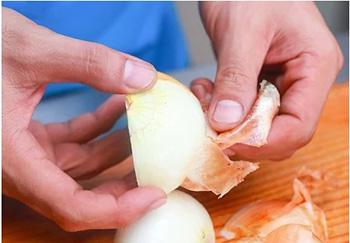 Onion’s antibiotic properties are well known. During the U.S. Civil War, onion juice was routinely used to treat gunshot wounds, as it contained an antimicrobial compound called allicin that protected the wound from getting infected.
Onion’s antibiotic properties are well known. During the U.S. Civil War, onion juice was routinely used to treat gunshot wounds, as it contained an antimicrobial compound called allicin that protected the wound from getting infected.
To use, cut an onion in half and use a blender to crush one of the halves. Mix with honey, apply to your wound, and leave for around 20 minutes before washing it off. Apply this mixture three times a day to accelerate the healing process.
Marigold
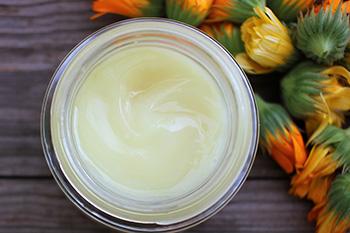 Marigold (Tagetes erecta) is a common perennial plant found in gardens everywhere. Studies suggest that it has anti-inflammatory and antimicrobial qualities and can stimulate collagen. Marigold ointments are available in many health products stores and you can apply brewed tea bags to any cuts or scrapes. If you have a ragweed allergy, consider doing a patch test first to make sure you won’t have a reaction.
Marigold (Tagetes erecta) is a common perennial plant found in gardens everywhere. Studies suggest that it has anti-inflammatory and antimicrobial qualities and can stimulate collagen. Marigold ointments are available in many health products stores and you can apply brewed tea bags to any cuts or scrapes. If you have a ragweed allergy, consider doing a patch test first to make sure you won’t have a reaction.
Tea Tree Oil
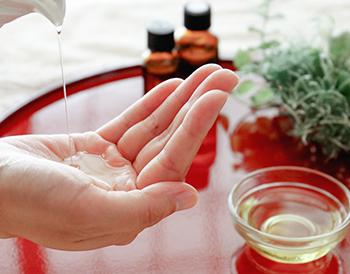 The leaves of Melaleuca alternifolia, a small tree native to Australia’s northern states, are used to make tea tree oil. Several compounds in this oil, including terpinen-4-ol, have been shown to kill bacteria, viruses, and fungi. In addition, terpinen-4-ol seems to activate your white blood cells, which help you fight germs. These properties make tea tree oil a valuable natural remedy for treating wounds, preventing infection, and promoting healing.
The leaves of Melaleuca alternifolia, a small tree native to Australia’s northern states, are used to make tea tree oil. Several compounds in this oil, including terpinen-4-ol, have been shown to kill bacteria, viruses, and fungi. In addition, terpinen-4-ol seems to activate your white blood cells, which help you fight germs. These properties make tea tree oil a valuable natural remedy for treating wounds, preventing infection, and promoting healing.
Tea tree oil can be purchased as a 100% undiluted oil. Products designed for the skin come in diluted forms, ranging from 5–50% strength, and may be used to treat minor cuts and scrapes. You can buy tea tree oil products formulated specifically for first aid purposes, so use them according to the directions on the package.
Plantain
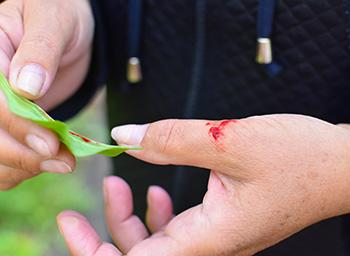 Plantain ((Plantago major) is called the “band-aid” plant as it has soothing and anti-inflammatory properties, all thanks to a natural compound found in this plant: iridoids. Besides this, the plantain contains aglycone and aucubigenin, which have documented antimicrobial properties. As you can see, the plantain is packed with beneficial agents for the skin and, in addition, has allantoin, which promotes skin healing.
Plantain ((Plantago major) is called the “band-aid” plant as it has soothing and anti-inflammatory properties, all thanks to a natural compound found in this plant: iridoids. Besides this, the plantain contains aglycone and aucubigenin, which have documented antimicrobial properties. As you can see, the plantain is packed with beneficial agents for the skin and, in addition, has allantoin, which promotes skin healing.
Related: Similar to Morphine: The Best Natural Painkiller that Grows in Your Backyard (Video)
Wound care – Don’ts:
- Don’t soak or scrub the wound because the tissue might reopen
- Don’t use alcohol, hydrogen peroxide, or plain soap on your wound. They can be harmful to healing skin and can slow the healing process. Instead, only clean your wound with salt water, sterile water, or distilled water.
- Don’t put pressure on your wound. Pressure on your wound will slow healing. Limit the time you’re on your wound as much as you can.
- Don’t touch your wound with your bare hands
- Don’t use lanolin, coal tar, or petrolatum-based products if you have sensitive skin
- Don’t use abrasive or rough washcloths for skin care and wound healing.
When to See your Doctor:
Now that you know some of the do’s and don’ts of wound care at home, you should also know when to contact a primary care physician. Not all wounds can be treated at home. The list below are some indications of when you should go to a wound center, after performing first aid at home.
Go to the nearest wound care clinic when:
- Your wound comes from a rusty or dirty object
- The wound is a result of an animal bite
- Wounds are a quarter-inch deep
- The wound won’t stop bleeding even after putting direct pressure for over five minutes
- You think your wound requires stitches or skin staples
- The wound is on the face, or there is a head trauma
- The edges of the wound are jagged or can’t be brought together
- You suspect signs and symptoms of serious wound infection
Any wound that has not started to heal in two weeks or completely healed in six weeks may benefit from specialized wound care.
Although serious wounds invariably require medical care, choosing natural remedies for the smaller cuts and scrapes that can accompany summer activities makes a lot of sense. You will reduce your family’s exposure to unnecessary chemicals and support natural healing, which is always the best outcome.
You may also like:
 How to Make a Chaparral Salve for Wounds And Skin Infections
How to Make a Chaparral Salve for Wounds And Skin Infections
This Plant is Called The Nature’s Tourniquet for a Reason (Video)
How to Make Black Drawing Salve for Boils, Wounds and Tick Bites








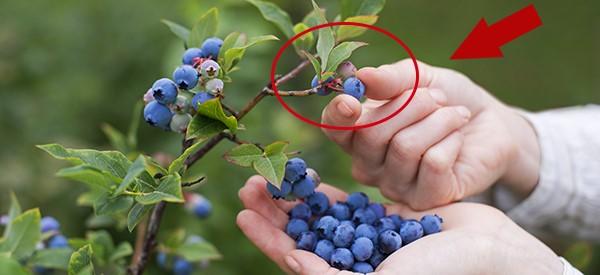
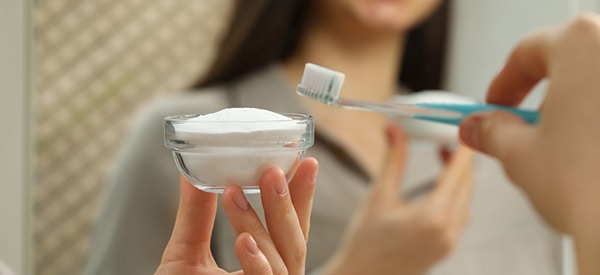
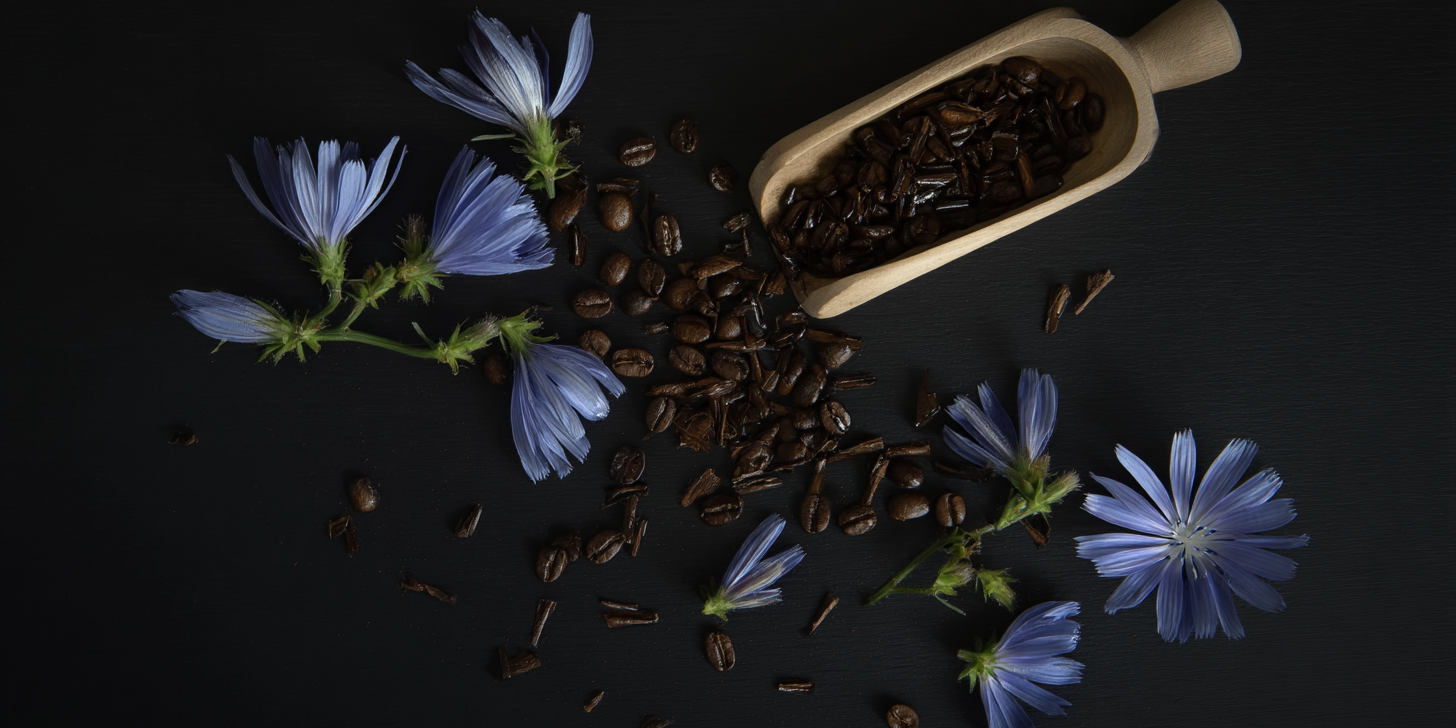
**Please don’t use honey if you are a diabetic. Many remedies that contain sugars will only make it worse. aloes are safe.
Almost a year now; Tripped, skidded on my hand, a fairly large nickle sized gash. We all know band aids do not stick. After 2-3 in an hour, decided to do something. I don’t think medical care, too early, don’t want stitches. Then I remembered. The inside membrane of a fresh egg. That is pure protein. I will say grocery store is old enough. Had to use a week old. Wash it gently, lay the membrane wet side down. Hurt like @*@, but it sealed the wound, and was able to carefully go about my day. Almost a year later, even the keloid has receded. Egg membrane is called natures band aid, having done it, I agree.
Will keep your info to add to my information.
You have your marigolds mixed up: not Tagetes erecta but Calendula officinalis!
They are correct in using Tagetes erecta.
Both can be used to treat wounds but Calendula officinalis better fits the description given on this page.